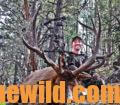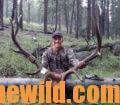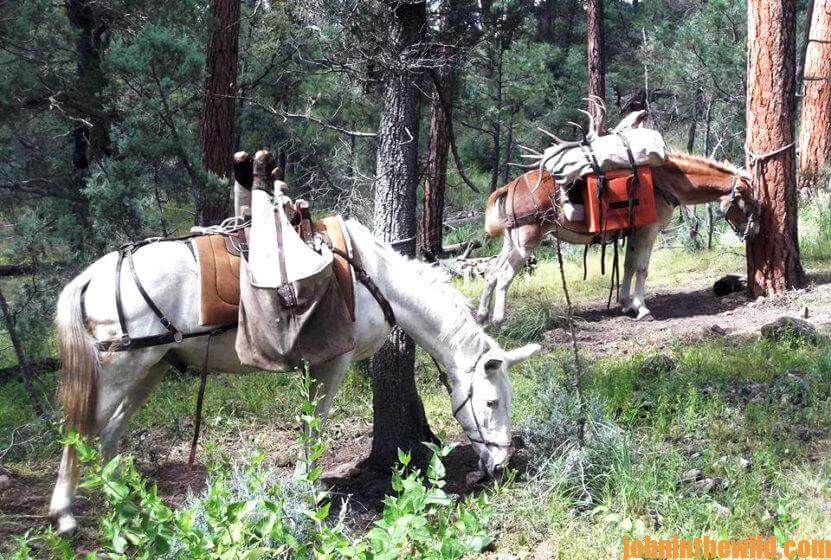Editor’s Note: 54-year-old Billy Bishop grew up in the White Mountains of Surprise, Arizona, and today lives in Buckeye, Arizona. He’s been an elk and mule deer guide since he was 19 and currently operates Blue Wilderness Guide Services (https://www.gohunt.com/outfitter/blue-wilderness-guide-services). His dad, Bill Bishop, was a construction worker during the spring and summer. When the weather wasn’t good, Billy and his dad trapped when fur was still selling at good prices. Once fur prices plummeted, Bill Bishop began to guide to elk and mule deer, and his son Billy became his first employee. The Bishop family has trapped, hunted and guided together most of their lives. Both archery enthusiasts, Bill and Billy have used their bows to take elk, mule deer and Coues deer when not trapping or guiding. “Over the years, I’ve called in more than 30 serious bull elk that my clients and I have harvested,” Billy Bishop, the son, reports. Billy Bishop hunts in the extreme backcountry and most often packs into wilderness areas on horseback, setting-up spike camps from where he and his clients can hunt during the season. Billy prefers to hunt what he calls “The Old Country,” areas where many older Bull elk go to retire and dodge hunters. The terrain is very brushy there and, in many instances, very steep in these regions. He’s not hunting private lands but rather Bureau of Land Management (BLM) lands (https://www.blm.gov/arizona), which is for the most part, public-hunting lands. To learn more about Billy Bishop you also can visit his Facebook page at https://www.facebook.com/BlueWildernessGuideServices/.
Billy Bishop became a fan of horseback packing trips after this hunt where the big elk fell off the cliff (see Day 1) because riding horses:
 * gave him and his clients the ability to get deep into the backcountry where they were most likely to find mature bull elk. Too, the horses could carry the meat and head of the elk out without a problem in really rough and rugged terrain; and
* gave him and his clients the ability to get deep into the backcountry where they were most likely to find mature bull elk. Too, the horses could carry the meat and head of the elk out without a problem in really rough and rugged terrain; and
* provided a way to carry all equipment, such as cooking utensils, camping gear, panniers, guns, binoculars, backpacks, first aid equipment and anything else the hunters and guides might need, even if the hunters didn’t like to ride horses.
On most backpack trips into the wilderness, a hunter will ride one or two hours on horseback from a trailhead, since most of these areas are only accessible by foot or on horseback. We usually try to get 10-12 miles into the wilderness from a trailhead before hunting. I usually ask my hunters to arrive at my base camp the morning before their hunt is supposed to start, so we don’t have to use a hunt day as transportation day. We ride into the places that we’re going to hunt, set-up camp, enjoy a good supper, get a good night’s sleep and start hunting before first light the next morning. We hunt the Mogollon Rim country in New Mexico
(http://www.pinetoplakesideaz.gov/272/Mogollon-Rim-of-Arizonas-White-Mountains), although this Colorado plateau of the White Mountains extends into Arizona, Utah and Colorado. Some of this country will be more than 9,000 feet high at the top of the rim and is very steep and rugged.
My horses act as decoys when we’re going into the places that we’re going to hunt. These older bulls have learned to identify the sounds that hunters make because hunters have only two feet, but the horses have four. Therefore, the elk aren’t nearly as startled when they hear four feet coming toward them, as they are when they hear two feet. I believe that they assume that those horses are other elk moving into the country where they live.
What I Learned from This Elk Hunt – You need to: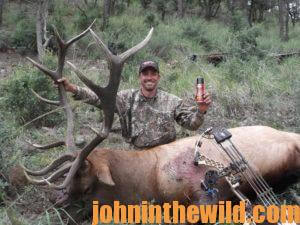
* Learn where all the drop-offs, canyons and creeks are. Mark the route you take with either a GPS receiver or a mapping app.
* Go further into the hunting land to find not only a larger number of bulls, but bigger bulls as well.
* Make sure you have other hunters on stand-by who can help you get your elk out of bad terrain, if and when you’re successful.
* Be certain you or your guide have plenty of rope that you may need to either keep the bull you take from sliding down the mountain and/or to solve any other problems that may arise if you’re in the backcountry.
* Be in good shape to reach a spot where you can take a big bull and more importantly, help carry out some of the meat from the bull you take.
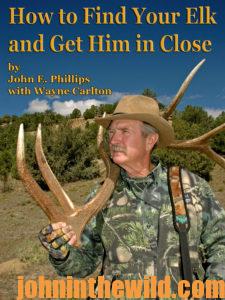 To learn more about elk hunting, check out John E. Phillips’ book, “How to Find Your Elk and Get Him in Close,” available in Kindle, print and Audible versions at http://amzn.to /17ENNqK.
To learn more about elk hunting, check out John E. Phillips’ book, “How to Find Your Elk and Get Him in Close,” available in Kindle, print and Audible versions at http://amzn.to /17ENNqK.
Tomorrow: Billy Bishop Hunts the 24 Hour 373 Inch Bull Buck

